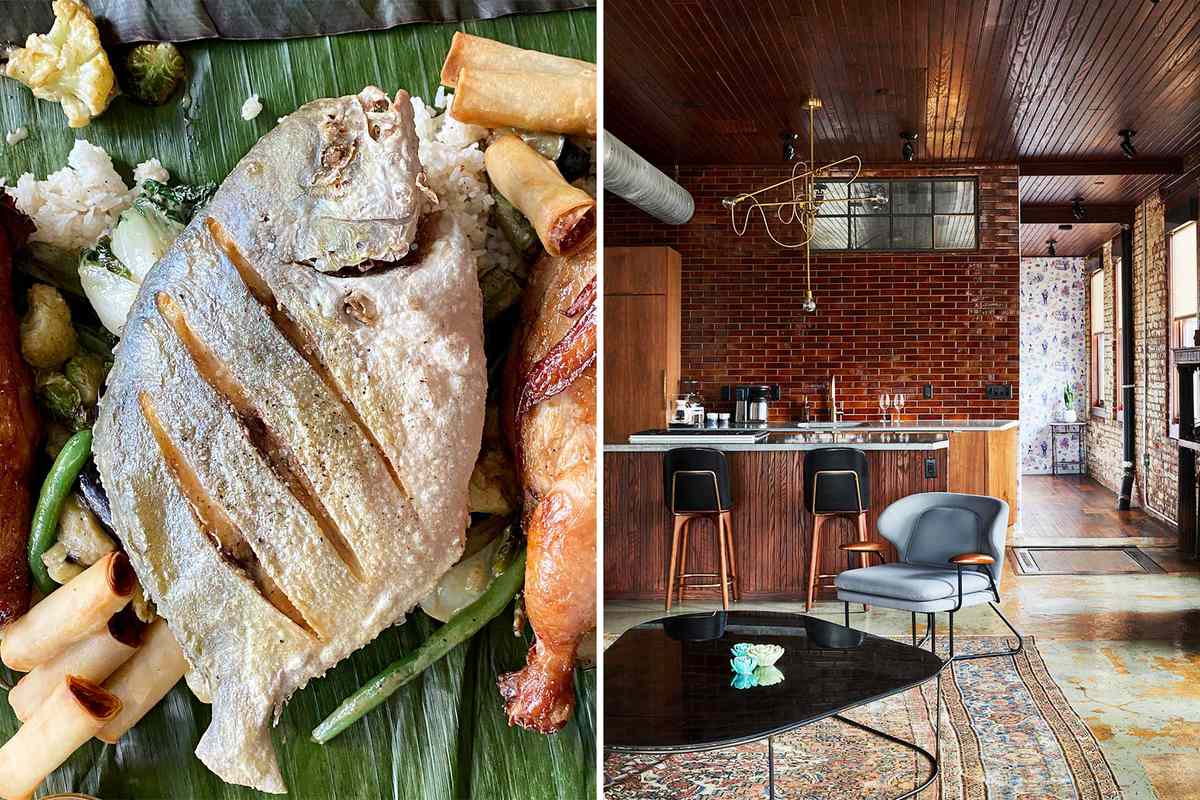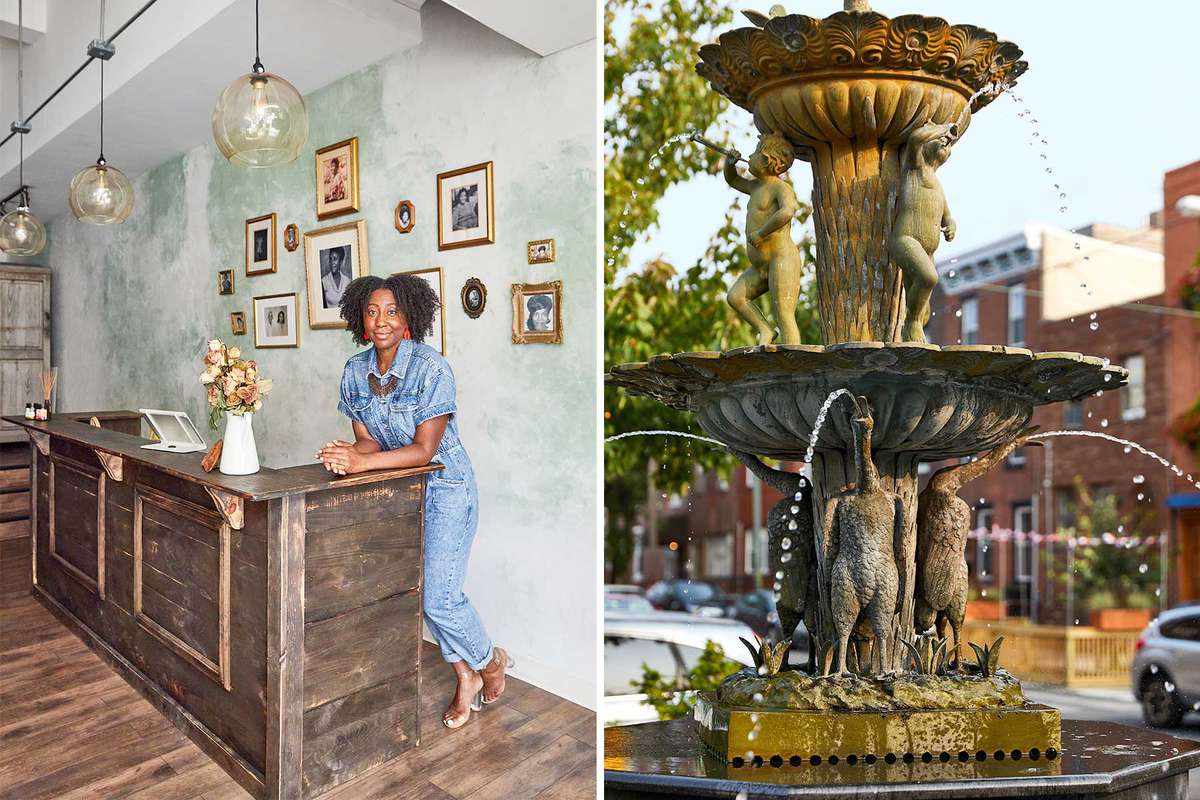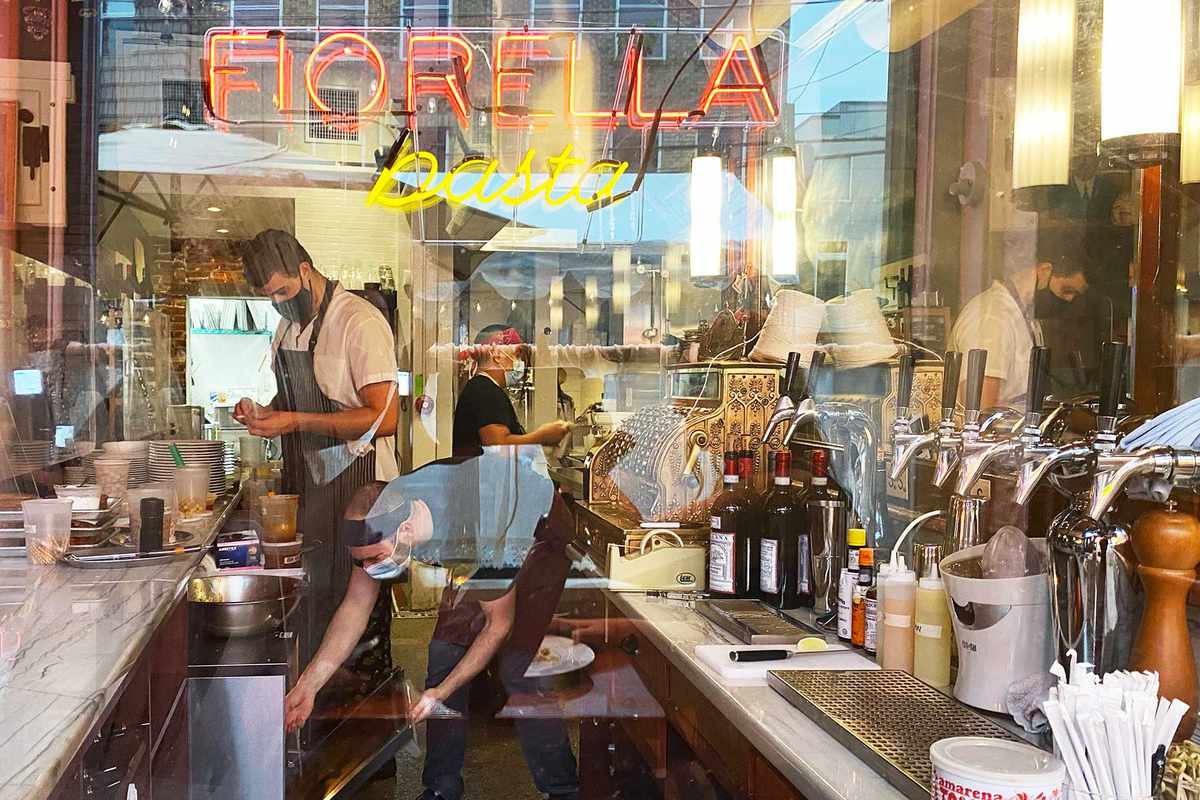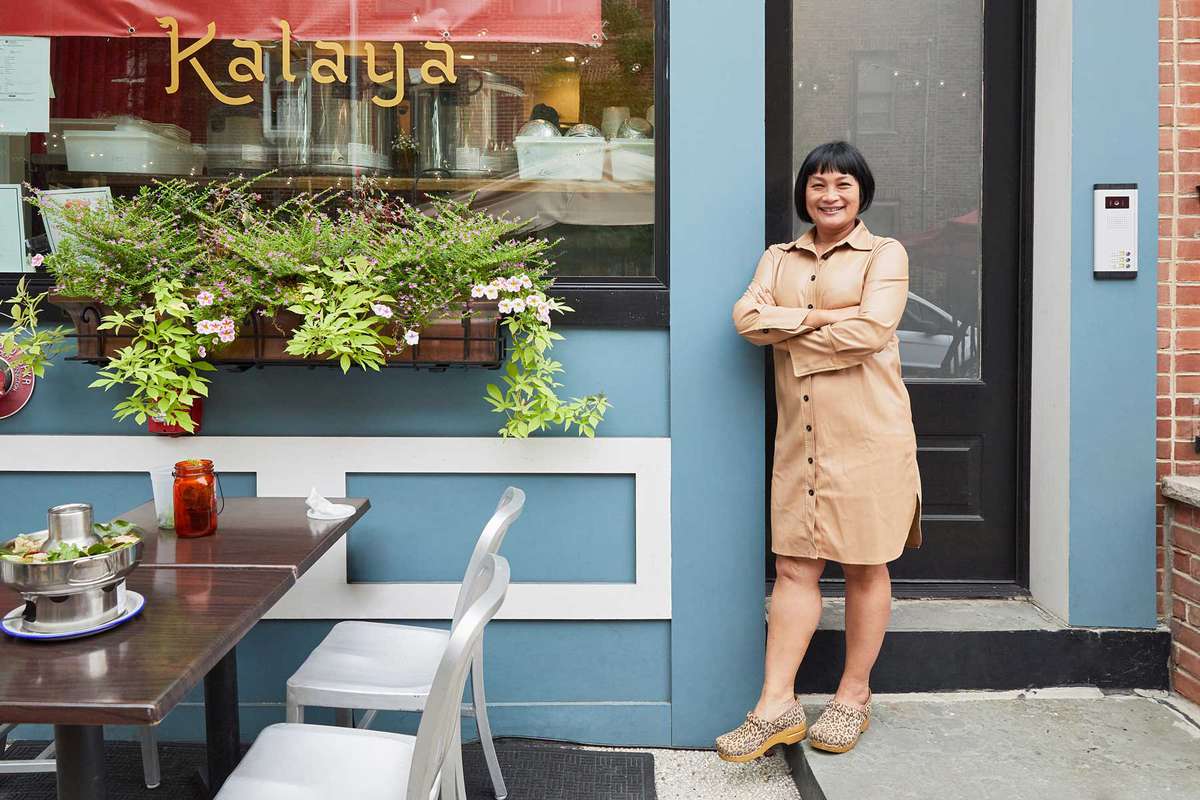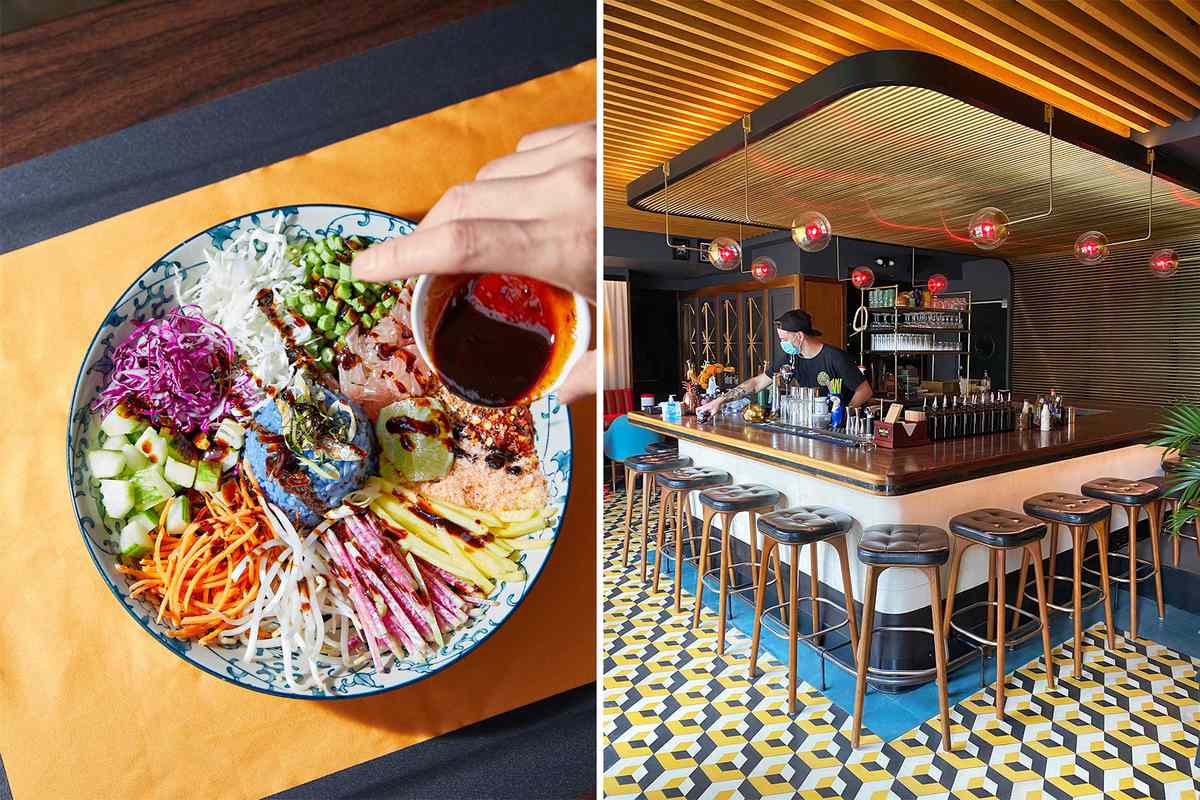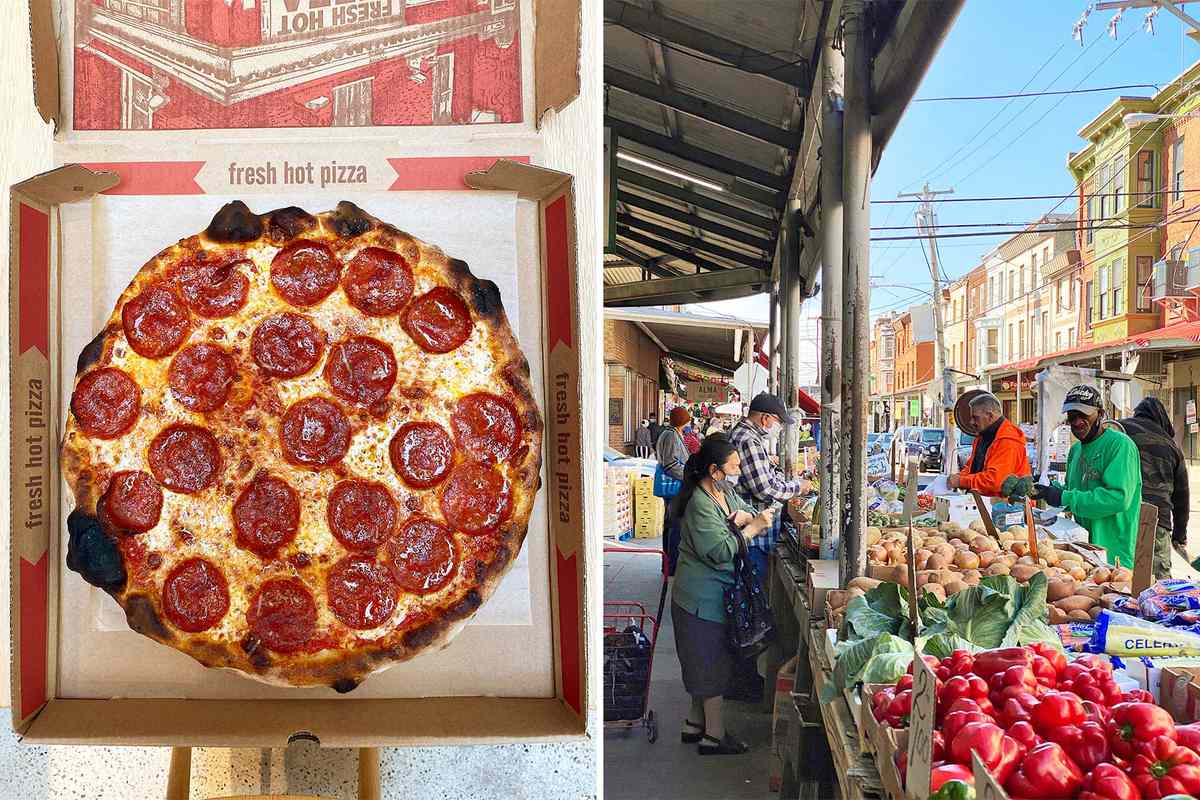Beyond Philadelphia’s historic center lies a constellation of neighborhoods that have become hubs of diversity and creativity. Meet the new generation behind the city’s urban renaissance.
It became embarrassing, our dependency on Perla, a Filipino BYOB in the East Passyunk neighborhood of Philadelphia. We took everyone there: friends visiting from out of town, my husband’s colleagues from work. We started to worry that our guests would compare notes, realize we didn’t eat anywhere else, and suspect that we were only saying yes to get-togethers as an excuse to go to Perla again.
We would go to the restaurant Wednesdays or Sundays, when its signature kamayan feasts were held. A server would cover our table with banana leaves, then lay down a base of garlic-fried rice. That was topped with pork belly, a whole fried fish, vegetables, and coconut sauce. We would all start picking away at our respective corners of the pile with our hands. It was so tactile and intimate. I couldn’t have known that, in a matter of months, I would become nostalgic for small tables packed with people sharing a communal meal, not to mention the bear hugs we got from the manager each time we visited.
In August, I went back to East Passyunk after months of being largely confined to my apartment in West Philly. I was nervous about returning. The city’s restaurants have been hit hard by the pandemic, and the neighborhood, a new culinary hub, had become reliant on the hospitality industry.
First, I stopped by Essen, a four-year-old Jewish bakery a few blocks from Perla. I’d lost track of the times I had popped into this tiny storefront in a converted row house for a slice of apple cake before heading to A Novel Idea, my favorite bookstore in the area. This time I found that Essen had turned its front window into a counter. As a huge loaf of chocolate babka was handed to me through a little opening, I remembered an article I had just read about “wine windows” in Tuscany, first invented in the 1600s during a plague and now making a comeback. Maybe there was still room for whimsy in the summer of 2020.
Walking past row houses built in the early 20th century to cater to working-class immigrants from Italy and Ireland, I found it easy to forget that I was in the middle of a booming restaurant district. Named after its main artery, East Passyunk Avenue, the neighborhood used to be known for its red-sauce Italian joints, elaborate Christmas-light displays, and shops that sold school uniforms. It has since become more diverse, welcoming immigrants from Latin America and Southeast Asia—as well as their cuisines.
“What I love about East Passyunk is that people make an effort to support local businesses. It’s the reason we’ve survived.”
“What I love about East Passyunk is that people make an effort to support local businesses,” Tova du Plessis, the South African owner of Essen, told me. “They’ll get their bread from me instead of from a big chain market. It’s the reason we’ve survived.” Indeed, there has long been a sense in this neighborhood that everyone is in it together. This is why Nick Elmi chose the area as the location of his first venture, the modern French restaurant Laurel, and the adjacent cocktail lounge, In the Valley. “We’re all pretty tightly knit,” he told me. “We borrow stuff like chives from each other all the time.”
That sense of interdependence has become a central facet of Philadelphia’s revival. In recent years, young chefs, artists, and entrepreneurs have flocked to the city’s more affordable enclaves—East Passyunk, Bella Vista, and the Kensington-Fishtown area—and thrived through collaboration. I became a part of this city’s creative community in 2018, when, thanks to cheap rents, I was able to leave an academic position in Ohio and return to my hometown to pursue writing full-time. I joined Blue Stoop, a local organization for writers, which has recently helped to lead a fundraising campaign for indie bookstores and small presses affected by the pandemic. Its beneficiaries have included A Novel Idea and, in Fishtown, Harriett’s Bookshop, which specializes in books by Black women.
No place better embodies Philly’s new energy than the Bok Building, a mixed-use space in East Passyunk. Bok was built as a vocational high school by the federal Public Works Administration during the Great Depression. The school was closed by the city in 2013 and lay dormant until Lindsey Scannapieco, a young local developer who had worked on London’s Olympic Village, bought it. Scannapieco had the idea to convert the school into a creative space for artists and small-business owners.
When I first heard about Bok, I had my reservations. The repurposed building got bad press in 2015 with the opening of a rooftop pop-up bar, Le Bok Fin, its name a riff on the city’s legendary French fine dining establishment Le Bec-Fin. The bar became a poster child for gentrification. But people came around when they realized that Le Bok Fin was just one part of the whole, and that the building would primarily cater to up-and-coming artists and indie brands.
Bok is now home to more than 140 vendors, including furniture makers, jewelry designers, skin-care companies, and artists’ studios. The roof now has a permanent tenant: Bok Bar, which has stunning views of the city. On my first visit, I was a little tripped out—the hallways are still lined with lockers, and some of the stores are in rooms that have the original chalkboards. But eventually you get over any qualms about going to a school to have drinks.
To Cieri, the Bok Building embodies a deeper ethos at play in East Passyunk and in Philadelphia overall: a desire to bring creative people together to learn from one another and have each other’s backs. “It’s a beautiful community,” Cieri affirmed. “I’m going to stay here as long as I can.”
You’ll find that sense of collective identity pulsing through the South 9th Street Italian Market, in the Bella Vista neighborhood—in large part thanks to chef Cristina Martinez of South Philly Barbacoa. The restaurant specializes in a style of cooking lamb that involves wrapping it in cactus leaves and roasting it for 12 hours in an underground pit.
Martinez came to the city as an undocumented immigrant from Mexico before starting her own business—a story she retells in a compelling episode of the Netflix series Chef’s Table. These days she’s a committed advocate for the rights of undocumented hospitality workers, and regularly invites local chefs who can’t afford to open their own places to take up residence in her restaurant for pop-ups.
Recently, chef Omar Tate used South Philly Barbacoa for his pop-up, Honeysuckle, which, he told me, serves food that is “a gateway to ideas of Blackness, as opposed to just what Black people eat.” He likes to pull recipe ideas from great works of Black literature. In Ralph Ellison’s 1952 novel, Invisible Man, for example, the protagonist is stopped in his tracks in Harlem by the smell of roasted yams; the fragrance gives him a “stab of swift nostalgia” for his childhood in the South. Tate turned the line into a recipe for poached sweet potatoes covered in molasses syrup and charred over hot coals.
In Bella Vista, the new-restaurant scene has largely been defined by the shift away from traditional Italian cuisine, toward establishments helmed by immigrant chefs from Latin America and Southeast Asia, much like in East Passyunk. Walking through the Italian Market, I could feel the different communities collide: pasta distributors and shops selling olive and truffle oil intermingled with tortilla makers and shops advertising quinceañera dresses.
When I asked chef Nok Suntaranon of Kalaya what it was like serving southern Thai food in the Italian Market, she said she felt right at home: “I used to run an Italian restaurant in Bangkok.”
She served me shaw muang: purple dumplings shaped like flowers and filled with savory ground chicken and sweet radish. It’s a dish for royalty, Nok told me, and, indeed, the recipe can be traced back to the early-19th-century reign of Thailand’s King Rama II. Given the obvious craftsmanship involved in sculpting the dumplings, which come in at $15 per dish, I was amazed to hear Nok say she still receives complaints about the price tag. “People think ethnic food should be cheap,” she said.
After my meal, I walked to the old Swedish settlement of Queen Village, to see how the shops in that area were holding up. Many of the vendors along Fabric Row on Fourth Street are run by third- and fourth-generation sellers, but the block is also making room for new boutiques. One of the best is Yowie, a popular design shop owned by Shannon Maldonado, who used to come to Fabric Row as a child. She left to attend fashion school in New York City, and worked as a designer for brands including Tommy Hilfiger and Ralph Lauren, before she began longing for something new.
“I was inspired by traveling,” she told me. “Each time I’d go somewhere, I’d pick up textiles or ceramics from a local maker. I wondered if maybe I would enjoy curating as much as I enjoy designing.” Indeed, every item in Yowie’s inventory feels one-of-a-kind, selected by someone with an effortless sense of style. There are candles by wax artist Piera Bochner, hand-dyed scarves, and housewares from local ceramists. Maldonado wants Yowie to be not only a store but also a community space; she has been active in supporting female entrepreneurs and has hosted get-out-the-vote events.
The changing landscape of Fishtown is perhaps best crystallized in the story of Pizzeria Beddia. Just five years ago, the shop had no telephone and no seats. It took only cash. Chef Joe Beddia, known as the “Jiro of Pizza,” only made 40 pies a day, and they quickly sold out. Demand skyrocketed after the restaurant got national media attention, and the pizzeria, overwhelmed by the sudden demand, closed down.
It reopened last year as a sit-down restaurant with a liquor license and an Instagram account. The new Pizzeria Beddia is located on Lee Street, a nondescript alley. Had I not been familiar with the area, I would almost certainly have gotten lost trying to find it. Fishtown still feels rough around the edges, literally—potholes, construction sites, and uneven sidewalks mean you have to be careful carrying your pizza back to the hotel. Fortunately, there’s a great one a short walk away: Wm. Mulherin’s Sons, a four-room property with a retro feel that used to be a whiskey distilling factory.
A lot of things in Fishtown are like this: repurposed spaces that retain their history but point toward the future. Jen Wink Hays, a painter and sculptor, and her husband, Tyler Hays, owner of the contemporary furniture label BDDW, live in a converted church in Fishtown. Each piece of the BDDW line, which has built a reputation for its modernist designs made from heirloom-quality wood, is crafted in its Philadelphia studio. Tyler told me that Philadelphia reminds him of “Brooklyn in the old days.” He noted that students straight out of art school are flocking to the area, and they’re not just staying cloistered in their studios; collaborative exhibitions and projects have become the norm. The Hayses have opened their home for studio tours hosted by Philadelphia Contemporary, an organization dedicated to showcasing the city’s artists. “It feels like we’re plugged in to something exciting,” Jen said.
Kensington, just north of Fishtown, is seeing its own revival. On Howard Street, where Laser Wolf, the latest restaurant from Michael Solomonov’s Israeli-cuisine empire, is located, everything looks like a converted warehouse. Andrew Henshaw, Laser Wolf’s head chef, was formerly chef de cuisine at Zahav, Solomonov’s flagship restaurant in Society Hill, which won the 2019 James Beard Award for Outstanding Restaurant. Henshaw told me he was excited to bring Laser Wolf and the Solomonov brand to Kensington, and that he liked the idea of “helping to elevate a rising area.”
Despite the ways the city has changed, Philadelphians’ unmistakable identity as a group of scrappy dreamers feels intact.
Laser Wolf is a shipudiya, which means “skewer house” in Hebrew. “This is how people in Israel actually eat,” Henshaw told me. “It’s like the pub in England or the diner in America.” There are lanterns hanging from the ceiling, and the tablecloths are shiny, colorful, and mismatched. Henshaw considers the salatim, a selection of salads traditionally served at the start of a meal, to be essential to Laser Wolf’s low-key vibe. The version I ate included golden beets with coriander, Israeli pickles, and shaved cucumber with harissa. Skewered meats came next: Romanian beef, Tunisian tuna, chicken marinated in guava, even an Impossible merguez for vegetarians. The cocktails are citrus-forward—the Salty Lion, made with gin, arak, grapefruit, and mint, is a nod to the juice vendors of Israel. Soft-serve ice cream comes with your check, to take with you on a stroll. Henshaw explained that he wants people to end a meal by exploring the neighborhood.
For so many of the chefs and small-business owners I spoke with, Philadelphia is a place where things still feel possible. Every conversation I had about food, or art, or a new skin-care line, returned to the subject of dreams and how the city has made them achievable. In East Passyunk, Bella Vista, Fishtown, and Kensington, that possibility comes paired with camaraderie, the sense that goals are best realized together. Despite the ways the city has changed, Philadelphians’ unmistakable identity as a group of scrappy dreamers made in the mold of Rocky Balboa, our true founding father, feels intact. And it’s a good thing. Like the rest of the world, we’re in for a fight.
